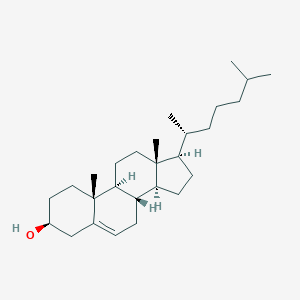
-
Cholesterol
NMR and HPLC COA下载 MSDS下载 - Names:
Cholesterol, water-permeable lipid
- CAS号:
57-88-5
MDL Number: MFCD00003646 - MF(分子式): C27H46O MW(分子量): 386.65
- EINECS:200-353-2 Reaxys Number:
- Pubchem ID: Brand:BIOFOUNT
Cholesterol, water-permeable lipid胆固醇是哺乳动物细胞中产生的主要甾醇,是细胞活力和增殖所必需的。 它是哺乳动物细胞膜的一种成分,与膜磷脂、鞘脂和蛋白质相互作用以影响它们的行为。 它也是各种基于脂质的药物递送 (LBDD) 系统的组成部分,包括脂质体和脂质纳米颗粒 (LNP),在这些系统中,它在膜稳定性方面发挥作用。胆固醇是类固醇激素、胆汁酸和活性形式的前体 维生素 D。受损的胆固醇稳态与各种疾病的发展有关,包括脂肪肝、糖尿病、胆结石、血脂异常、动脉粥样硬化、心脏病发作和中风。
| 货品编码 | 规格 | 纯度 | 价格 (¥) | 现价(¥) | 特价(¥) | 库存描述 | 数量 | 总计 (¥) |
|---|---|---|---|---|---|---|---|---|
| SC0010-500g | 500g | 95% | ¥ 850.00 | ¥ 850.00 | 780 | Instock,1days | ¥ 0.00 | |
| SC0010-5g | 5g | 95% | ¥ 49.00 | ¥ 49.00 | 52 | Instock 1days | ¥ 0.00 | |
| SC0010-25g | 25g | 95% | ¥ 119.00 | ¥ 119.00 | 97 | Instock 1days | ¥ 0.00 | |
| SC0010-100g | 100g | 95% | ¥ 236.00 | ¥ 236.00 | 287 | Instock,1days | ¥ 0.00 |
| 中文别名 | 57-88-5;胆固醇;左旋倍他洛尔;内源性雌激素相关受体α激动剂;ERRα激动剂 |
| 英文别名 | Epicholesterol;Cholesterol;water-permeable lipid;Provitamin D;NSC 8798;(3β)-cholest-5-en-3-ol |
| CAS号 | 57-88-5 |
| SMILES | CC(C)CCCC(C)C1CCC2C1(CCC3C2CC = C4C3(CCC(C4)O)C)C |
| Inchi | InChI = 1S / C27H46O / c1-18(2)7-6-8-19(3)23-11-12-24-22-10-9-20-17-21(28)13-15-26( 20,4)25(22)14-16-27(23,24)5 / h9,18-19,21-25,28H,6-8,10-17H2,1-5H3 / t19-,21 +, 22 +,23-,24 +,25 +,26 +,27- / m1 / s1 |
| InchiKey | HVYWMOMLDIMFJA-DPAQBDIFSA-N |
| 分子式 Molecular Weight | C27H46O |
| 分子量 Formula | 386.65 |
| 闪点 FP | |
| 熔点 Melting point | 148.5°C |
| 沸点 Boiling point | 360°C |
| Polarizability极化度 | No data available |
| 密度 Density | 1.067 @ 20°C / 4°C |
| 蒸汽压 Vapor Pressure | 25°C时为0.0±2.7 mmHg |
| 溶解度Solubility | 略溶于热酒精;溶于胆盐的苯,油,脂肪和水溶液0.095 mg / L(在30°C下)Soluble in hot alcohol, chloroform, pyridine, benzene, fats , oils, acetone, dioxane, ethyl acetate, petroleum ether, and ether. Insoluble in water. |
| 性状 | 白色或微黄色的珍珠状颗粒或晶体No data available |
| 储藏条件 Storage conditions | 2-8oC,密封阴凉避光保存。 |
胆脂醇(57-88-5,Cholesterol)实验注意事项:
1.使用57-88-5实验前需戴好防护眼镜,穿戴防护服和口罩,佩戴手套,避免与皮肤接触。
2.使用57-88-5实验过程中如遇到有毒或者刺激性物质及有害物质产生,必要时实验操作需要手套箱内完成以免对实验人员造成伤害。
3.取样品57-88-5的移液枪头需及时更换,必要时为避免交叉污染尽可能选择滤芯吸头。
4.称量药品时选用称量纸,并无风处取药和称量以免扬撒,试剂的容器使用前务必确保干净,并消毒。
5.取药品57-88-5时尽量采用多个药勺分别使用,使用后清洗干净。
6.实验后产生的废弃物需分类存储,并交于专业生物废气物处理公司处理,以免造成环境污染。
大规格定制:定制产品请将信息发送至sales@bio-fount.com。
Experimental considerations:
1. Wear protective glasses, protective clothing and masks, gloves, and avoid contact with the skin during the experiment.
2. The waste generated after the experiment needs to be stored separately, and handed over to a professional biological waste gas treatment company to avoid environmental pollution.
Tags:胆固醇试剂.胆固醇杂质.胆固醇中间体.胆固醇溶解度.胆固醇旋光度.胆固醇密度.胆固醇购买.胆固醇MSDS.胆固醇结构式.
| 产品说明 | Cholesterol, water-permeable lipid胆固醇是哺乳动物细胞中产生的主要甾醇,是细胞活力和增殖所必需的。 它是哺乳动物细胞膜的一种成分,与膜磷脂、鞘脂和蛋白质相互作用以影响它们的行为。 它也是各种基于脂质的药物递送 (LBDD) 系统的组成部分,包括脂质体和脂质纳米颗粒 (LNP),在这些系统中,它在膜稳定性方面发挥作用。胆固醇是类固醇激素、胆汁酸和活性形式的前体 维生 |
| Introduction | Cholesterol is a major sterol produced in mammalian cells that is required for cell viability and proliferation. |
| Application1 | 胆固醇是生物膜的主要组成部分,总脑磷脂25%左右为胆固醇 |
| Application2 | 生化研究,脑磷脂胆固醇絮状试验 |
| Application3 | 胆固醇可以应用于工业合成中间体 |
胆脂醇(57-88-5,Cholesterol)药理学:
※胆固醇是一种胆甾醇,由在5,6-位具有双键的胆甾烷以及3β-羟基组成。它具有作为人类代谢物,小鼠代谢物,水蚤(Daphnia galeata)代谢物和藻类代谢物的作用。它是3β-固醇,胆甾醇,C27-类固醇和3β-羟基-Delta(5)-类固醇。胆固醇是在脊椎动物的身体组织(和血浆)中发现的一种动物固醇。可以在肝脏,脊髓和大脑中发现大量这种物质。胆固醇是细胞膜的重要组成部分,具有稳定性。它是合成维生素D,各种类固醇激素(包括肾上腺皮质醇,可的松和醛固酮)以及性激素黄体酮,雌激素和睾丸激素的主要前体。胆固醇对于脑突触以及免疫系统也具有重要作用。在以低密度脂蛋白(LDL)升高为特征的疾病中,胆固醇通常会在动脉壁上形成斑块沉积,这种疾病被称为动脉粥样硬化,这是导致冠心病和其他形式的心血管疾病的主要原因。
※胆固醇是一种胆甾醇,由在5,6-位具有双键的胆甾烷以及3β-羟基组成。它具有作为人类代谢物,小鼠代谢物,水蚤(Daphnia galeata)代谢物和藻类代谢物的作用。它是3β-固醇,胆甾醇,C27-类固醇和3β-羟基-Delta(5)-类固醇。
※Cholesterol, also known as cholesterin or cordulan, belongs to the class of organic compounds known as cholesterols and derivatives. Cholesterols and derivatives are compounds containing a 3-hydroxylated cholestane core. Thus, cholesterol is considered to be a sterol lipid molecule. Cholesterol exists as a solid and is considered to be practically insoluble (in water) and relatively neutral. Cholesterol has been found throughout all human tissues, and has also been detected in most biofluids, including feces, blood, cerebrospinal fluid, and bile. Cholesterol can be found anywhere throughout the human cell, such as in lysosome, cytoplasm, membrane (predicted from logP), and endoplasmic reticulum. Cholesterol participates in a number of enzymatic reactions. In particular, Cholesterol can be converted into 22b-hydroxycholesterol through its interaction with the enzyme cholesterol side-chain cleavage enzyme, mitochondrial. Furthermore, Cholesterol can be converted into 20alpha-hydroxycholesterol through its interaction with the enzyme cholesterol side-chain cleavage enzyme, mitochondrial. Furthermore, Cholesterol can be converted into 7a-hydroxycholesterol through its interaction with the enzyme cholesterol 7-alpha-monooxygenase. Finally, Cholesterol and palmitic acid can be biosynthesized from ce(22:2(13Z, 16Z)) through the action of the enzyme lysosomal acid lipase/cholesteryl ester hydrolase. In humans, cholesterol is involved in bile acid biosynthesis pathway, steroid biosynthesis pathway, the lovastatin action pathway, and the zoledronate action pathway. Cholesterol is also involved in several metabolic disorders, some of which include the child syndrome pathway, adrenal hyperplasia type 5 or congenital adrenal hyperplasia due to 17 Alpha-hydroxylase deficiency, the apparent mineralocorticoid excess syndrome pathway, and the hypercholesterolemia pathway.
Cholesterol is found in animals and humans in all body tissues. Cholesterol may be released directly into the environment in effluents from wastewater treatment facilities. If released to air, an estimated vapor pressure of 7.8X10-10 mm Hg at 25 °C indicates cholesterol will exist solely in the particulate phase in the ambient atmosphere. Particulate-phase cholesterol will be removed from the atmosphere by wet and dry deposition. If released to soil, cholesterol is expected to have no mobility based upon an estimated Koc of 16,000. Volatilization from moist soil surfaces is expected to be an important fate process based upon an estimated Henry's Law constant of 1.67X10-4 atm-cu m/mole. However, adsorption to soil is expected to attenuate volatilization. If released into water, cholesterol is expected to adsorb to suspended solids and sediment based upon the estimated Koc. Volatilization from water surfaces is expected to be an important fate process based upon this compound's estimated Henry's Law constant. Estimated volatilization half-lives for a model river and model lake are 8.9 hours and 11 days, respectively. However, volatilization from water surfaces is expected to be attenuated by adsorption to suspended solids and sediment in the water column. An estimated BCF of 270 suggests the potential for bioconcentration in aquatic organisms is high. Hydrolysis is not expected to be an important environmental fate process since this compound lacks functional groups that hydrolyze under environmental conditions. Occupational exposure to cholesterol may occur through dermal contact with this compound at workplaces where cholesterol is produced or used. The general population is exposed to cholesterol through dietary intake of foods containing cholesterol. Cholesterol is also produced endogenously by humans and other mammals. (SRC)
| 警示图 | |
| 危险性 | warning |
| 危险性警示 | Not Available |
| 安全声明 | H303吞入可能有害+H313皮肤接触可能有害+H333吸入可能对身体有害 |
| 安全防护 | P264处理后彻底清洗+P280戴防护手套/穿防护服/戴防护眼罩/戴防护面具+P305如果进入眼睛+P351用水小心冲洗几分钟+P338取出隐形眼镜(如果有)并且易于操作,继续冲洗+P337如果眼睛刺激持续+P313获得医疗建议/护理 |
| 备注 | 避免吸入,误食以及与皮肤接触 |
胆脂醇(57-88-5,Cholesterol)应急措施:
人体中胆固醇的致癌性证据不足。在实验动物中,胆固醇的致癌性证据不足。总体评价:胆固醇对人类的致癌性无法分类。
基本治疗:建立专利气道。必要时吸。留意呼吸功能不全的征兆,必要时协助通气。通过非呼吸面罩以10至15升/分钟的速度施用氧气。监测肺水肿并在必要时进行治疗。监视震动并在必要时进行处理。预期癫痫发作,必要时治。对于眼睛污染,请立即用水冲洗眼睛。在运输过程中用生理盐水连续冲洗每只眼睛。不要使用催吐剂。摄入时,应漱口,如果患者可以吞咽,具有强烈的呕吐反射性且不会流口水,则应以5 ml / kg 的剂量最多添加200 ml的水进行稀释。去污后用干燥的无菌敷料覆盖皮肤烧伤. 进阶治疗:昏迷,严重肺水肿或呼吸暂停的患者,应考虑经气管插管或经气管插管进行气道控制。带有气囊阀面罩装置的正压通风技术可能是有益的。监测心律并在必要时治疗心律不齐。使用D5W / SRP启动IV:“保持打开”,最小流速/。如果存在血容量不足的迹象,请使用乳酸林格氏液。注意是否有液体超载的迹象。考虑药物治疗肺水肿。对于有血容量不足迹象的低血压,请谨慎使用液体。注意是否有液体超负荷的迹象。用安定(Valium)治疗癫痫发作。使用盐酸普罗卡因协助眼睛冲洗.
| 1. Ohvo-Rekil?, H., Ramstedt, B., Leppim?ki, P., et al. Cholesterol interactions with phospholipids in membranes. Prog. Lipid Res. 41(1), 66-97 (2002). |
| 2. Tenchov, R., Bird, R., Curtze, A.E., et al. Lipid nanoparticles-from liposomes to mRNA vaccine delivery, a landscape of research diversity and advancement. ACS Nano 15(11), 16982-17015 (2021). |
| 3. Yamanashi, Y., Takada, T., and Suzuki, H. Associations between lifestyle-related diseases and transporters involved in intestinal absorption and biliary excretion of cholesterol. Biol. Pharm. Bull. |
胆脂醇(57-88-5,Cholesterol)参考文献:
1、EML webinar overview: Simulation-assisted discovery of membrane targeting nanomedicine Extreme Mechanics Letters 2020-09-01 32537481
The COVID-19 pandemic has brought infectious diseases again to the forefront of global public health concerns. In this EML webinar (Gao, 2020), we discuss some recent work on simulation-assisted discovery of membrane targeting nanomedicine to counter increasing antimicrobial resistance and potential application of similar ideas to the current pandemic. A recent report led by the world health organization (WHO) warned that 10 million people worldwide could die of bacterial infections each year by 2050. To avert the crisis, membrane targeting antibiotics are drawing increasing attention due to their intrinsic advantage of low resistance development. In collaboration with a number of experimental groups, we show examples of simulation-assisted discovery of molecular agents capable of selectively penetrating and aggregating in bacterial lipid membranes, causing membrane permeability/rupture. Through systematic all-atom molecular dynamics simulations and free energy analysis, we demonstrate that the membrane activity of the molecular agents correlates with their ability to enter, perturb and permeabilize the lipid bilayers. Further study on different cell membranes demonstrates that the selectivity results from the presence of cholesterol in mammalian but not in bacterial membranes, as the cholesterol can condense the hydrophobic region of membrane, preventing the penetration of the molecular agents. Following the molecular penetration, we establish a continuum theory and derive the energetic driving force for the domain aggregation and pore growth on lipid membrane. We show that the energy barrier to membrane pore formation can be significantly lowered through molecular aggregation on a large domain with intrinsic curvature and a sharp interface. The theory is consistent with experimental observations and validated with coarse-grained molecular dynamics simulations of molecular domain aggregation leading to pore formation in a lipid membrane. The mechanistic modelling and simulation provide some fundamental principles on how molecular antimicrobials interact with bacterial membranes and damage them through domain aggregation and pore formation. For treating viral infections and cancer therapy, we discuss potential size- and lipid-type-based selectivity principles for developing membrane active nanomedicine. These studies suggest a general simulation-assisted platform to accelerate discovery and innovation in nanomedicine against infectious diseases.
2、 Caveolae and Lipid Rafts in Endothelium: Valuable Organelles for Multiple Functions Biomolecules 2020-08-21 32825713
Caveolae are flask-shaped invaginations of the plasma membrane found in numerous cell types and are particularly abundant in endothelial cells and adipocytes. The lipid composition of caveolae largely matches that of lipid rafts microdomains that are particularly enriched in cholesterol, sphingomyelin, glycosphingolipids, and saturated fatty acids. Unlike lipid rafts, whose existence remains quite elusive in living cells, caveolae can be clearly distinguished by electron microscope. Despite their similar composition and the sharing of some functions, lipid rafts appear more heterogeneous in terms of size and are more dynamic than caveolae. Following the discovery of caveolin-1, the first molecular marker as well as the unique scaffolding protein of caveolae, we have witnessed a remarkable increase in studies aimed at investigating the role of these organelles in cell functions and human disease. The goal of this review is to discuss the most recent studies related to the role of caveolae and caveolins in endothelial cells. We first recapitulate the major embryological processes leading to the formation of the vascular tree. We next discuss the contribution of caveolins and cavins to membrane biogenesis and cell response to extracellular stimuli. We also address how caveolae and caveolins control endothelial cell metabolism, a central mechanism involved in migration proliferation and angiogenesis. Finally, as regards the emergency caused by COVID-19, we propose to study the caveolar platform as a potential target to block virus entry into endothelial cells。
3、 Hydroxychloroquine is protective to the heart, not Harmful: A systematic review New microbes and new infections 2020-08-20 32839670
Background Hydroxychloroquine (HCQ) has been shown to be at least somewhat effective in treating COVID 19 patients. Recently FDA and CDC warnings of fatal cardiac toxicity from Torsade de Pointes (TDP) arrhythmia from HCQ use have been made, notwithstanding the long safe HCQ use for lupus and rheumatoid arthritis. This has resulted in restricted access of HCQ for COVID 19 treatment. We hypothesized that HCQ and azithromycin have not been reported to cause significant acute cardiac arrhythmic mortality. Methods We performed a literature search for the effects of HCQ and azithromycin on the heart. Results No Torsade de Pointes or related deaths were found to have been reported as a result of HCQ and azithromycin use in the peer reviewed literature. To the contrary HCQ/azithromycin were uniformly found to substantially reduce cardiac mortality and also to decrease thrombosis, arrhythmia and cholesterol in treated patients in recent peer reviewed studies and meeting presentations. Conclusions HCQ and azithromycin do not cause TDP cardiac mortality. HCQ decreases cardiac events. HCQ should not be restricted in use for COVID 19 patients because of fear of cardiac mortality.
4、Greater risk of severe COVID-19 in Black, Asian and Minority Ethnic populations is not explained by cardiometabolic, socioeconomic or behavioural factors, or by 25(OH)-vitamin D status: study of 1326 cases from the UK Biobank Journal of public health (Oxford, England) 2020-08-18 32556213
Background We examined whether the greater severity of coronavirus disease 2019 (COVID-19) amongst men and Black, Asian and Minority Ethnic (BAME) individuals is explained by cardiometabolic, socio-economic or behavioural factors. Methods We studied 4510 UK Biobank participants tested for COVID-19 (positive, n = 1326). Multivariate logistic regression models including age, sex and ethnicity were used to test whether addition of (1) cardiometabolic factors [diabetes, hypertension, high cholesterol, prior myocardial infarction, smoking and body mass index (BMI)]; (2) 25(OH)-vitamin D; (3) poor diet; (4) Townsend deprivation score; (5) housing (home type, overcrowding) or (6) behavioural factors (sociability, risk taking) attenuated sex/ethnicity associations with COVID-19 status. Results There was over-representation of men and BAME ethnicities in the COVID-19 positive group. BAME individuals had, on average, poorer cardiometabolic profile, lower 25(OH)-vitamin D, greater material deprivation, and were more likely to live in larger households and in flats/apartments. Male sex, BAME ethnicity, higher BMI, higher Townsend deprivation score and household overcrowding were independently associated with significantly greater odds of COVID-19. The pattern of association was consistent for men and women; cardiometabolic, socio-demographic and behavioural factors did not attenuate sex/ethnicity associations. Conclusions In this study, sex and ethnicity differential pattern of COVID-19 was not adequately explained by variations in cardiometabolic factors, 25(OH)-vitamin D levels or socio-economic factors. Factors which underlie ethnic differences in COVID-19 may not be easily captured, and so investigation of alternative biological and genetic susceptibilities as well as more comprehensive assessment of the complex economic, social and behavioural differences should be prioritised.
5、Hydroxychloroquine: mechanism of action inhibiting SARS-CoV2 entry bioRxiv : the preprint server for biology 2020-08-14 32817933
Propofol, tetracaine, and HCQ inhibit SARS2-PV viral entry. HCQ directly perturbs both GM1 lipid rafts and PIP2 domains. GM1 rafts increased in size and number similar to anesthetic disruption of lipid rafts; PIP2 domains decreased in size and number. HCQ blocked both GM1 and PIP2 domains ability to attract and cluster ACE2.
Ren 化学品安全技术说明书 | 版本:1.0 | |||
按照GB/T16483、GB/T17519编制 | 修订日期:10.07.2019 | |||
打印日期:19.02.2020 | ||||
版权所有:范德(北京)生物科技有限责任公司 | 最初编制日期:25.05.2017 | |||
公司网站:WWW.BIO-FOUNT.COM | SDS编号:BIOFOUNT-BS0033 | |||
版权所有:BIOFOUNT BEIJING BIO TECH CO.,LTD | 产品编号:BS0033 | |||
胆固醇 | ||||
说明书目录 | ||||
第1部分 | 第2部分 | 危险性概述 | ||
第3部分 | 成分/组成信息 | 第4部分 | 急救措施 | |
第5部分 | 消防措施 | 第6部分 | 泄露应急处理 | |
第7部分 | 操作处置与储存 | 第8部分 | 接触控制/个体防护 | |
第9部分 | 理化性质 | 第10部分 | 稳定性和反应性 | |
第11部分 | 毒理学信息 | 第12部分 | 生态学危害信息 | |
第13部分 | 废弃处置 | 第14部分 | 运输信息 | |
第15部分 | 法律法规信息 | 第16部分 | 其他补充信息 | |
第1部分:化学品及企业标识 | ||||
1.1 产品标识 | ||||
胆固醇 | ||||
ENGLISH NAME: | Cholesterol | |||
BS0033 | ||||
BIOFOUNT | ||||
57-88-5 | ||||
1.2 安全技术说明书提供者的详情 | ||||
制造商或供应商名称: | ||||
制造地址: | 59 KANGTAI AVENUE BINHAI NEW DISTRICT TIANJIN 300450 TIANJIN CHINA 范德(天津)生物科技有限责任公司 天津市滨海新区康泰大道59号九州通绿谷健康产业园 邮政编码:300450 | |||
电话号码: | ||||
1.3 应急咨询电话 | ||||
紧急联系电话: | ||||
1.4 物质或混合物的推荐用途和限制用途 | ||||
已确认的各用途: | 仅用于科学研发,不作为药品、家庭或其它用途。 | |||
第2部分:危险性概述 | ||||
2.1 GHS危险性类别 | ||||
暂无数据 | ||||
2.2 GHS 标签要素,包括防范说明 | ||||
象形图 | ||||
暂无数据 | ||||
暂无数据 | ||||
暂无数据 | ||||
警告申明 | ||||
避免吸入,误食以及与皮肤接触 | ||||
暂无数据 | ||||
事故响应 | ||||
1.化学品使用过程中,当出现事故或者有紧急情况发生时,当事人应第一时间向应急小组负责人汇报后,由应急小组采取措施防止事态扩大。2.应急小组对受害人采取救护措施。 | ||||
密封阴凉避光保存。99%-20℃保存 | ||||
废弃处置 | ||||
暂无数据 | ||||
2.3 物理和化学危险 | ||||
暂无数据 | ||||
2.4 健康危害 | ||||
暂无数据 | ||||
2.5 环境危害 | ||||
暂无数据 | ||||
2.6 其它危害物 | ||||
暂无数据 | ||||
第3部分:成分/组成信息 | ||||
物质/混合物 | 暂无数据 | |||
3.1 物 质 | ||||
C27H46O | ||||
386.65 | ||||
110-91-8 | ||||
EC-编号 | 200-353-2 | |||
根据相应法规,无需披露具体组份。 | ||||
第4部分:急救措施 | ||||
4.1 必要的急救措施描述 | ||||
吸入 | ||||
立即将患者移至空气新鲜处,发现呼吸困难时,必须立即采取吸氧处理,停止呼吸时采取人工呼吸。同时联系及时就医。 | ||||
皮肤接触 | ||||
立即脱去或者剪去污染的衣物,迅速用大量的流动清水冲10-20分钟甚至更长时间后,赴医院就医。 | ||||
眼睛接触 | ||||
立即用大量的流动清水冲10-20分钟后赴医院就医处理。 | ||||
食入 | ||||
误食化学物品后,应立即采取措施进行催吐。1.若误食化学品呈酸性,则可服用大量牛奶和水,促使食如折呕吐。2.若误食化学品呈碱性,则可服用大量牛奶、清水和醋,促使其呕吐,紧急处理后,应及时送至医院进行治疗(仅供参考)。食如者昏迷状态下禁止催吐,以免造成窒息。 | ||||
4.2 最重要的症状和健康影响 | ||||
最重要的已知症状及作用已在标签(参见章节2.2)和/或章节11中介绍 | ||||
暂无数据 | ||||
4.4 对医生的特别提示 | ||||
暂无数据 | ||||
第5部分:消防措施 | ||||
5.1 灭火介质 | ||||
采用泡沫灭火器、二氧化碳灭火器,避免造成二次污染发生。 | ||||
5.2 源于此物质或混合物的特别的危害 | ||||
暂无数据 | ||||
5.3 灭火注意事项及保护措施 | ||||
小规模着火需戴好口罩,防止有毒气体吸入。火灾发生时及时启动应急相应系统撤离至上风口处,并联系当地消防部门灭火。 | ||||
第6部分:泄露应急处理 | ||||
1.泄露后首先启动应急相应系统2.泄露处理前,需穿戴好安全安全防护鞋、穿戴好安全防护手套(强酸性物质需穿戴防酸碱手套)、根据吸入危险性穿戴相应防护面罩。 有关个人防护,请看第8部分。 | ||||
6.2 环境保护措施 | ||||
参照《范德生物化学废弃物处理方法》处理,防止对环境造成危害,处理后交由有资质的废弃物处理结构进行处理,以免造成环境污染。 | ||||
参照《范德生物化学品废弃物处理方法》对泄露的化学品进行处理,处理前需用化学品吸附岩棉对泄露区域进行围挡,形成“围堰”防止泄露扩大。 | ||||
6.4 参考其他部分 | ||||
丢弃处理请参阅第13节。 | ||||
第7部分:操作处置与储存 | ||||
7.1 安全操作的注意事项 | ||||
使用过程请穿戴好口罩,手套等防护用品,避免与皮肤接触、吸入、误食危险。 有关预防措施,请参见章节2.2。 | ||||
7.2 安全储存的条件,包括任何不兼容性 | ||||
暂时无法提供详细数据,尽可能避免与其他化合物混合存储,避光、通风处存储。 | ||||
第8部分:接触控制/个体防护 | ||||
8.1 控制参数 | ||||
暂无数据 | ||||
8.2 暴露控制 | ||||
适当的技术控制 | ||||
暂无数据 | ||||
个体防护装备 | ||||
一般情况下穿戴安全防护眼镜即可,如有飞溅液体、粉末产生时,请佩戴防溅面罩进行防护。穿戴的防护用品需取得如:GB、NIOSH (美国) 或 EN 166(欧盟) 等相关认证。 | ||||
手套脱去注意事项:手套在使用前必须进行检查,请使用正确的方法脱除手套(不接触手套外部表面),避免身体任何皮肤部位接触到此产品。根据相关法律法规和实验室管理规范制度,手套使用过后,请将被污染的手套谨慎处理,工作后清洗并吹干双手。 所选择的保护手套必须符合法规《劳动防护用品配备标准》、(EU)2016/425以及从此类法规衍生出来的EN 374标准规范。 完全接触保护要求: 手套材料:丁腈橡胶 手套最小的层厚度:0.11 MM 手套溶剂渗透时间:480 分钟 飞溅保护要求: 材料:丁腈橡胶 最小的层厚度 0.11 MM 溶剂渗透时间:480 分钟 如果以溶剂形式应用或与其它物质混合应用,或在不同于《劳动防护用品配备标准》,EN 374规定的条件下应用,请与EC批准的手套的供应商联系。该条只是作为推荐性建议,如遇特殊情况,务必请熟悉该产品属性的专家,选取相关防护用品。此条建议不应该被认定为适应所有特殊条件防护,请根据所处工作条件请求专业工程师指导采取相应防护措施。 | ||||
选择身体部分的防护措施,需要根据危险物质的类型、浓度、量以及特定的工作环境。身体部分防护设备、防护服的类型,必须根据使用者工作场所中的危险物质的浓度、数量进行选择。 | ||||
一般情况下穿戴普通的医用口罩保护呼吸系统即可。有酸雾产生式活性炭类口罩起不到防护作用,如需对粉尘造成损害进行防护时,请采用N95型(US)或P1型(EN 143)类口罩或者防尘面具。特殊情况下使用自吸式呼吸器时,使用的呼吸器必须对呼吸器密闭性、空气供应系统、供气压进行测试,当然呼吸器需通过强制认证标准如:GB、NIOSH(US)、CEN(EU)。 | ||||
环境暴露的控制 | ||||
不要让产品进入下水道。 | ||||
第9部分:理化特性 | ||||
9.1 基本的理化特性的信息 | ||||
形状:暂无数据 | ||||
颜色:暂无数据 | ||||
气味 | 暂无数据 | |||
气味阈值 | 暂无数据 | |||
暂无数据 | ||||
148.5°C | ||||
初沸点和沸程 | 360°C | |||
闪点 | 209.3±12.4 °C | |||
蒸发速率 | 暂无数据 | |||
易燃性(固体,气体) | 暂无数据 | |||
高的/低的燃烧性或爆炸性限度 | 暂无数据 | |||
蒸气压 | 0.0±2.7 mmHg at 25°C | |||
蒸气焓 | 85.9±6.0 kJ/mol | |||
密度/相对密度 | 1.0670 | |||
Soluble in hot alcohol, chloroform, pyridine, benzene, fats , oils, acetone, dioxane, ethyl acetate, petroleum ether, and ether. Insoluble in water. | ||||
正辛醇/水分配系数 | Log Kow (KOWWIN v1.67 estimate) = 8.74/ Boiling Pt, Melting Pt, Vapor Pressure Estimations (MPBPWIN v1.42):
Boiling Pt (deg C): 432.76 (Adapted Stein & Brown method)
Melting Pt (deg C): 162.07 (Mean or Weighted MP)
VP(mm Hg,25 deg C): 1.79E-007 (Modified Grain method)
MP (exp database): 141.5 deg C
BP (exp database): 360 deg C
Subcooled liquid VP: 2.69E-006 mm Hg (25 deg C, Mod-Grain method) | |||
正辛醇空气分配系数 | Log Kow used: 8.74 (KowWin est)
Log Kaw used: -2.166 (HenryWin est)
Log Koa (KOAWIN v1.10 estimate): 10.906
Log Koa (experimental database): None | |||
自燃温度 | 暂无数据 | |||
分解温度 | 暂无数据 | |||
黏度 | 暂无数据 | |||
暂无数据 | ||||
氧化性 | 暂无数据 | |||
根据碎片估算水溶胶 | Wat Sol (v1.01 est) = 0.0036073 mg/L
Wat Sol (Exper. database match) = 0.10
Exper. Ref: YALKOWSKY,SH & DANNENFELSER,RM (1992) | |||
亨利定律常数(25摄氏度) | Bond Method : 1.67E-004 atm-m3/mole
Group Method: Incomplete
Henrys LC [VP/WSol estimate using EPI values]: 2.207E-004 atm-m3 | |||
9.2 其他安全信息 | ||||
暂无数据 | ||||
第10部分:稳定性和反应性 | ||||
10.1 稳定性 | ||||
暂无数据 | ||||
10.2 危险反应 | ||||
暂无数据 | ||||
10.3 应避免的条件 | ||||
暂无数据 | ||||
10.4 禁配物 | ||||
强氧化剂 | ||||
10.5 危险的分解产物 | ||||
暂无数据 | ||||
第11部分:毒理学信息 | ||||
11.1 毒理学影响信息 | ||||
暂无数据 | ||||
皮肤腐蚀/刺激 | ||||
暂无数据 | ||||
暂无数据 | ||||
呼吸或皮肤过敏 | ||||
暂无数据 | ||||
暂无数据 | ||||
暂无数据 | ||||
生殖毒性 | ||||
暂无数据 | ||||
特异性靶器官系统毒性(一次接触) | ||||
暂无数据 | ||||
特异性靶器官系统毒性(反复接触) | ||||
暂无数据 | ||||
吸入危害 | ||||
暂无数据 | ||||
附加说明 | ||||
暂无数据 | ||||
第12部分:生态学危害信息 | ||||
12.1 生态毒性 | ||||
暂无数据 | ||||
12.2 持久性和降解性 | ||||
暂无数据 | ||||
12.3 快速生物降解的可能性 | ||||
Biowin1 (Linear Model) : 0.3543
Biowin2 (Non-Linear Model) : 0.0081 | ||||
12.4 专家调查生物降解结果 | ||||
Biowin3 (Ultimate Survey Model): 2.0804 (months )
Biowin4 (Primary Survey Model) : 3.1124 (weeks ) | ||||
12.5 MITI生物降解的可能性 | ||||
Biowin5 (MITI Linear Model) : 0.1334
Biowin6 (MITI Non-Linear Model): 0.0124 | ||||
12.6 厌氧生物降解的可能性 | ||||
Biowin7 (Anaerobic Linear Model): -1.1876 | ||||
12.7 现成的生物降解性预测 | ||||
NO | ||||
12.8 碳氢化合物生物降解 | ||||
Structure incompatible with current estimation method! | ||||
12.9 对气溶胶的吸附 | ||||
Vapor pressure (liquid/subcooled): 0.000359 Pa (2.69E-006 mm Hg)
Log Koa (Koawin est ): 10.906
Kp (particle/gas partition coef. (m3/ug)):
Mackay model : 0.00836
Octanol/air (Koa) model: 0.0198 | ||||
12.10 羟基自由基反应 | ||||
OVERALL OH Rate Constant = 129.3090 E-12 cm3/molecule-sec
Half-Life = 0.083 Days (12-hr day; 1.5E6 OH/cm3)
Half-Life = 0.993 Hrs | ||||
12.11 臭氧反应 | ||||
OVERALL Ozone Rate Constant = 7.393750 E-17 cm3/molecule-sec
Half-Life = 0.155 Days (at 7E11 mol/cm3)
Half-Life = 3.720 Hrs | ||||
12.12 空气中颗粒物吸附的分数(PHI) | ||||
0.316 (Junge,Mackay)
Note: the sorbed fraction may be resistant to atmospheric oxidation | ||||
12.13 土壤吸附系数 | ||||
暂无数据 | ||||
12.14 碱/酸催化水解(25℃) | ||||
Koc : 1.417E+006
Log Koc: 6.151 / Aqueous Base/Acid-Catalyzed Hydrolysis (25 deg C) [HYDROWIN v1.67]:
Rate constants can NOT be estimated for this structure!/ | ||||
12.15 利用对数KOW估算生物累积量 | ||||
Log BCF from regression-based method = 2.428 (BCF = 268)
log Kow used: 8.74 (estimated) | ||||
12.16 废水处理中的去除 | ||||
Total removal: 94.03 percent
Total biodegradation: 0.78 percent
Total sludge adsorption: 93.25 percent
Total to Air: 0.00 percent
(using 10000 hr Bio P,A,S) | ||||
12.17 三级逸度模型 | ||||
Mass Amount Half-Life Emissions
(percent) (hr) (kg/hr)
Air 0.0129 1.29 1000
Water 1.39 1.44e+003 1000
Soil 29.8 2.88e+003 1000
Sediment 68.8 1.3e+004 0
Persistence Time: 4.69e+003 hr | ||||
12.18 土壤中的迁移性 | ||||
暂无数据 | ||||
12.19 PBT和VPVB的结果评价 | ||||
暂无数据 | ||||
12.20 其他环境有害作用 | ||||
暂无数据 | ||||
第13部分:废弃处置 | ||||
13.1 废物处理 | ||||
None | ||||
None | ||||
第14部分:运输信息 | ||||
14.1 联合国编号 / UN NUMBER | ||||
欧洲陆运危规 / ER/RID: | None | |||
国际海运危规 / IMDG: | None | |||
国际空运危规 / IATA-DGR: | None | |||
14.2 联合国运输名称 / UN PROPER SHIPPING NAME | ||||
欧洲陆运危规: | None | |||
国际海运危规: | None | |||
国际空运危规: | None | |||
欧洲陆运危规 / ER/RID: | None | |||
国际海运危规 / IMDG: | None | |||
国际空运危规 / IATA-DGR: | None | |||
欧洲陆运危规 / ER/RID : | None | |||
国际海运危规 / IM0DG: | None | |||
国际空运危规 / IATA-DGR: | None | |||
None | ||||
14.6 特殊防范措施 / SPECIAL PRECAUTIONS FOR USER | ||||
None | ||||
None | ||||
第15部分:法律法规信息 | ||||
适用法规 | ||||
《中华人民共和国安全生产法》、《职业病防治法》、《化学化工实验室安全管理规范》 | ||||
其它的规定 | ||||
《生产安全事故报告和调查处理条例》、《职业病防治法》、《职业安全和卫生法》美国1970 | ||||
第16部分:其他补充信息 | ||||
其他信息 版权所有:BIOFOUNT BEIJING BIO TECH CO.,LTD 公司。许可无限制纸张拷贝,仅限于内部使用。 上述信息视为正确,但不包含所有的信息,仅作为指引使用。本文件中的信息是基于我们目前所知,就正确的安全提示来说适用于本品。该信息不代表对此产品性质的保证。BIOFOUNT公司及其附属公司对任何操作或者接触上述产品而引起的损害不负有任何责任。更多使用条款,参见发票或包装条的反面。 更多销售条款及条件请参见HTTP://WWW.BIO-FOUNT.COM/或发票或装箱单的背面。欲悉详情,请联系:SALES@BIO-FOUNT.COM | ||||
- 相关产品
-
< >
- 推荐产品
-
< >
- 最新产品
-
< >
新闻
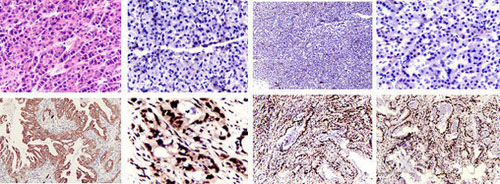
怎么做细胞爬片免疫组化染色实验
细胞爬片免疫组化染色,是通过细胞爬片是让玻片浸在细胞培养基内,细胞在玻片上生长,主要用于组织学,免疫组织化学...
2020/7/20 22:04:33
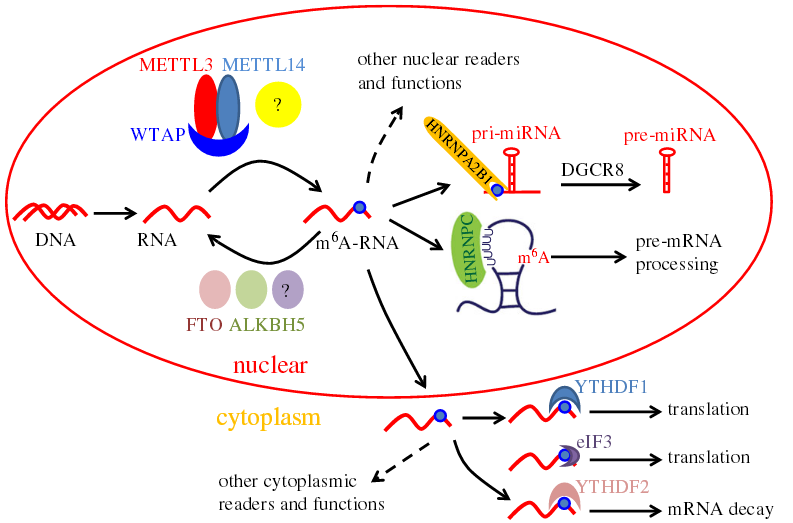
提取病毒RNA的实验方法
提取病毒RNA方法分别有:异硫氰酸胍的提取病毒RNA方法、TRIzol LS提取法、Trizol法提取法等等...
2020/7/22 20:29:26
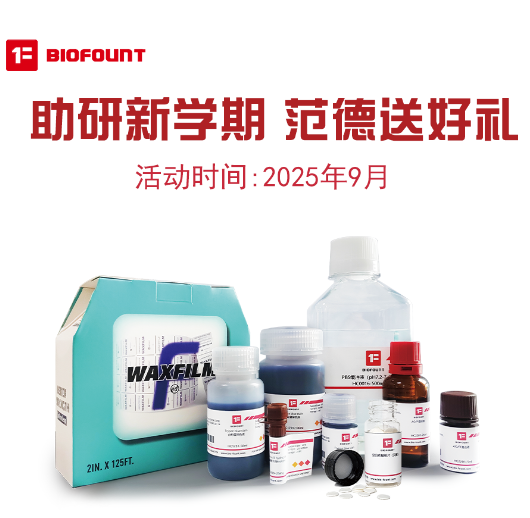
9月开学季——助研新学期 范德送好礼
2025/8/28 15:30:55

Waxfilm 实验室封口膜:技术与国际市场的双重突破
在实验室耗材领域,封口膜是保障实验准确性与稳定性的关键产品之一。近年来,Waxfilm?实验室封口膜凭借其卓...
2025/5/13 13:03:40
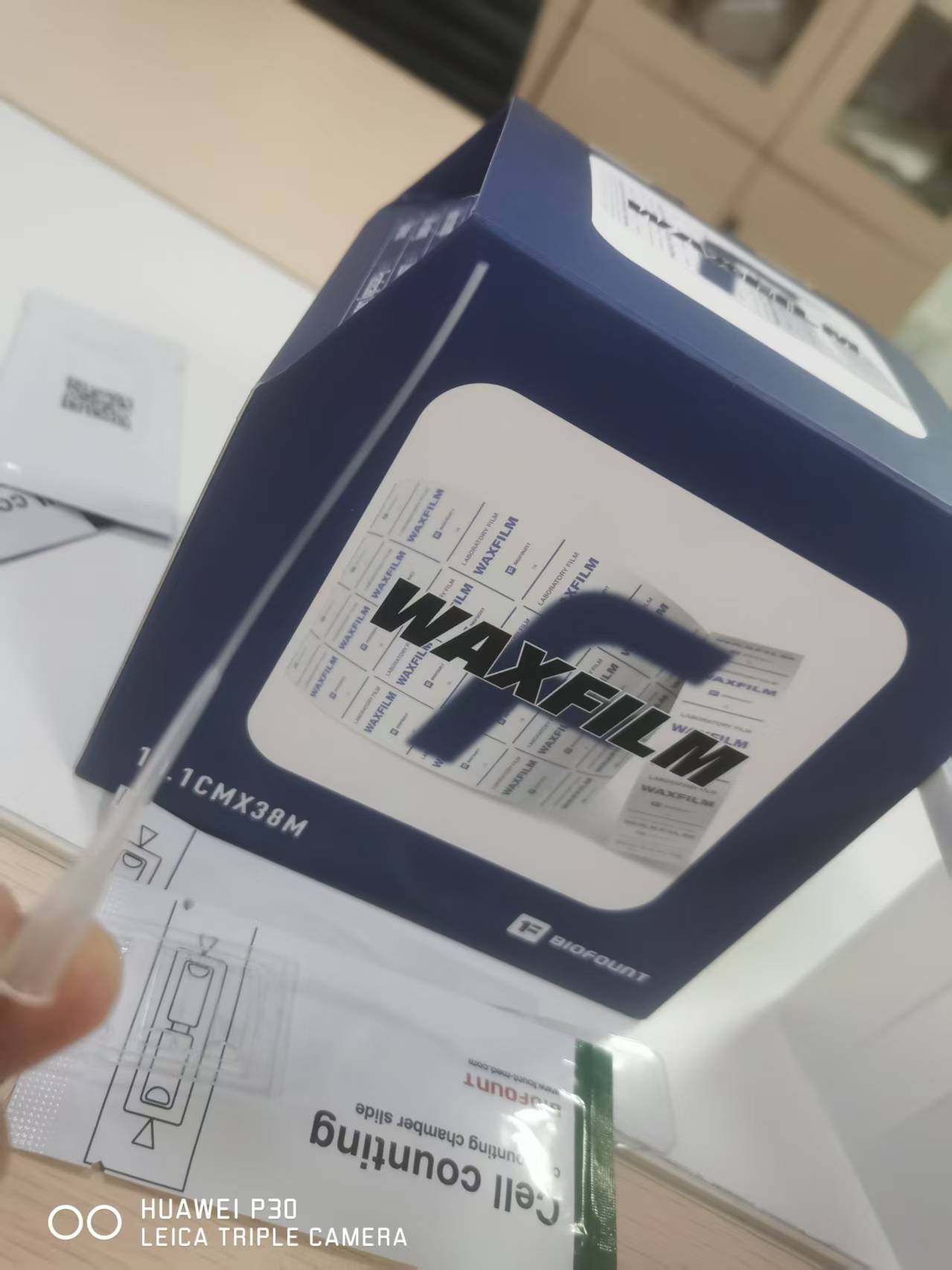
Waxfilm实验室封口膜的5大突破
Waxfilm实验室封口膜作为生物功能膜领域的国产技术突破和品牌突破,是生物领域中国技术发展的缩影。
2025/5/6 17:02:07
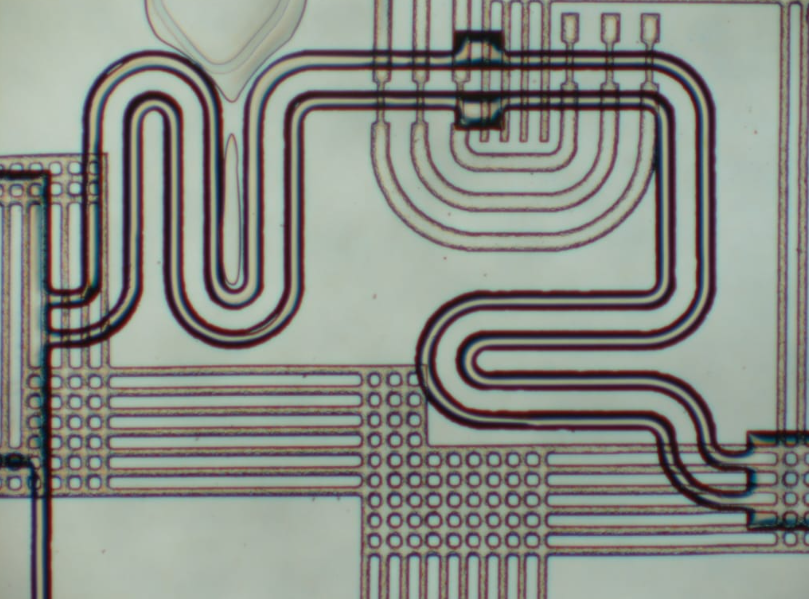
各种微流控芯片键合方法的优缺点
微流控芯片键合:目前主要有激光焊接、热压键合、胶键合、超音波焊接,每种方法都有各自的优缺点。本文主要介绍聚酯...
2023/7/28 10:43:09
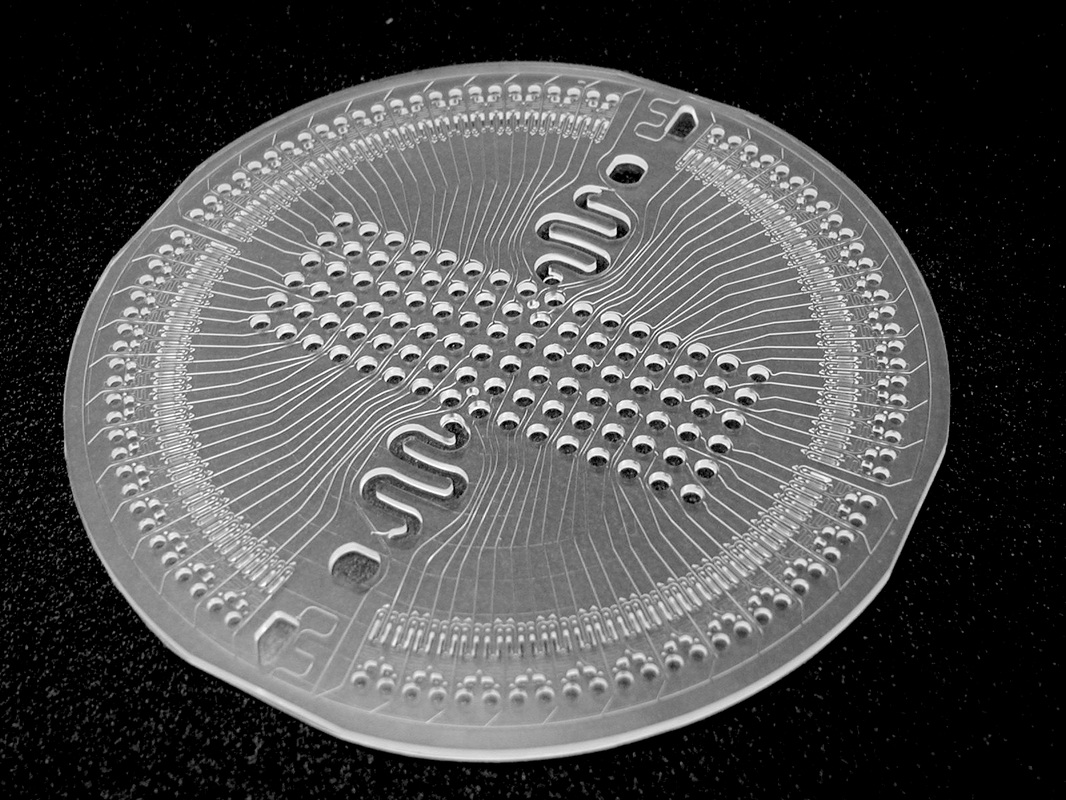
新一代微流控键合解决方案
微流控键合解决方案:微流控芯片制造的一个重要环节,也是最容易被忽视的--芯片键合。其中一个重要因素是:微流控...
2023/7/27 12:44:28
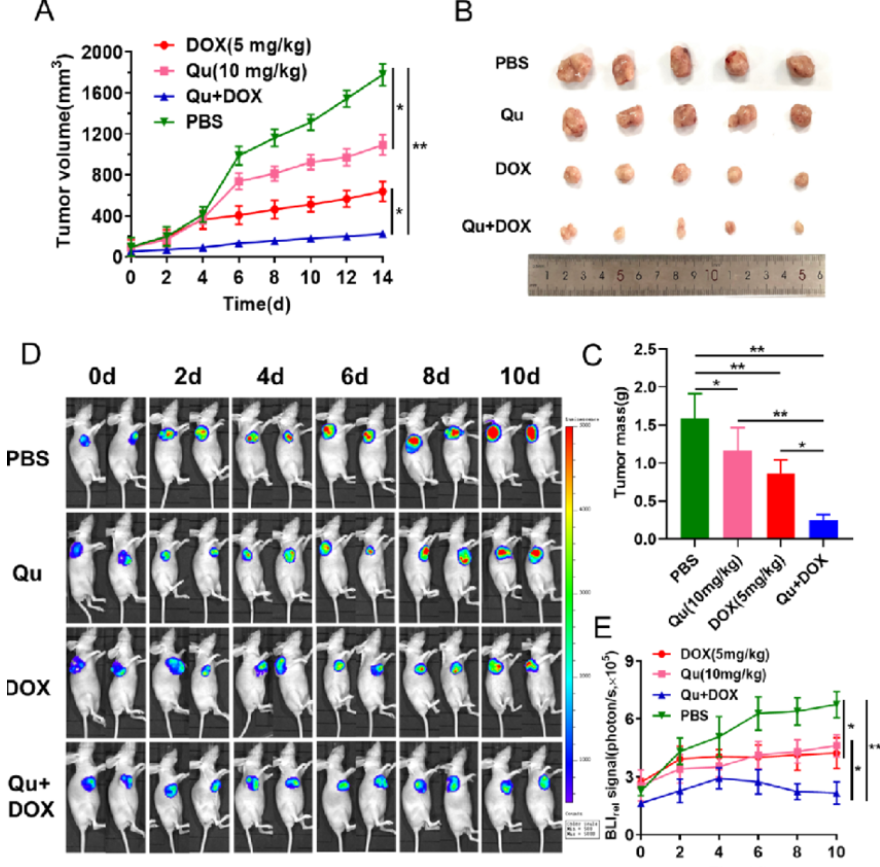
荧光素钾盐使用说明
D-荧光素钾盐(K+)设计用于体外和体内生物发光测定。D-荧光素的质量和纯度对于获得良好和可重复的结果至关重...
2023/7/20 11:05:11
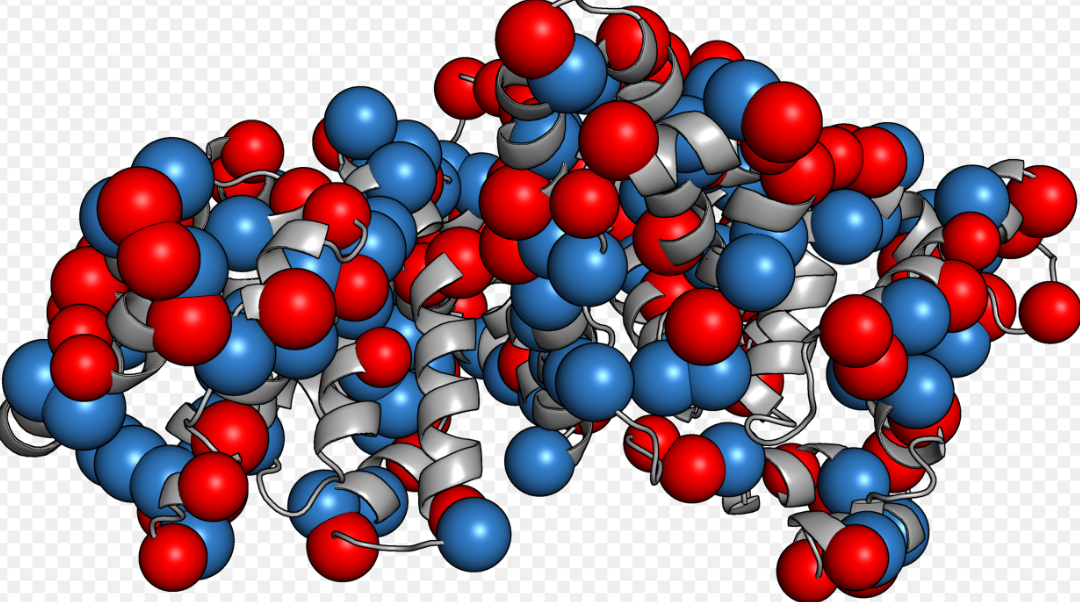
如何选BSA(牛血清白蛋白)
如何选BSA(牛血清白蛋白):牛血清白蛋白(BSA)有多种形式,如何选择适合自己的牛血清白蛋白(BSA)是一...
2023/2/14 13:09:18
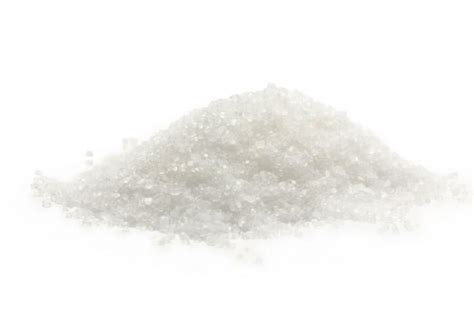
牛血清白蛋白(BSA)常见问题
牛血清白蛋白(BSA)常见问题:牛血清白蛋白(BSA)在实验室中是通用的,可用于蛋白质印迹、细胞组织培养、P...
2022/10/19 9:39:51




 购物车
购物车 



